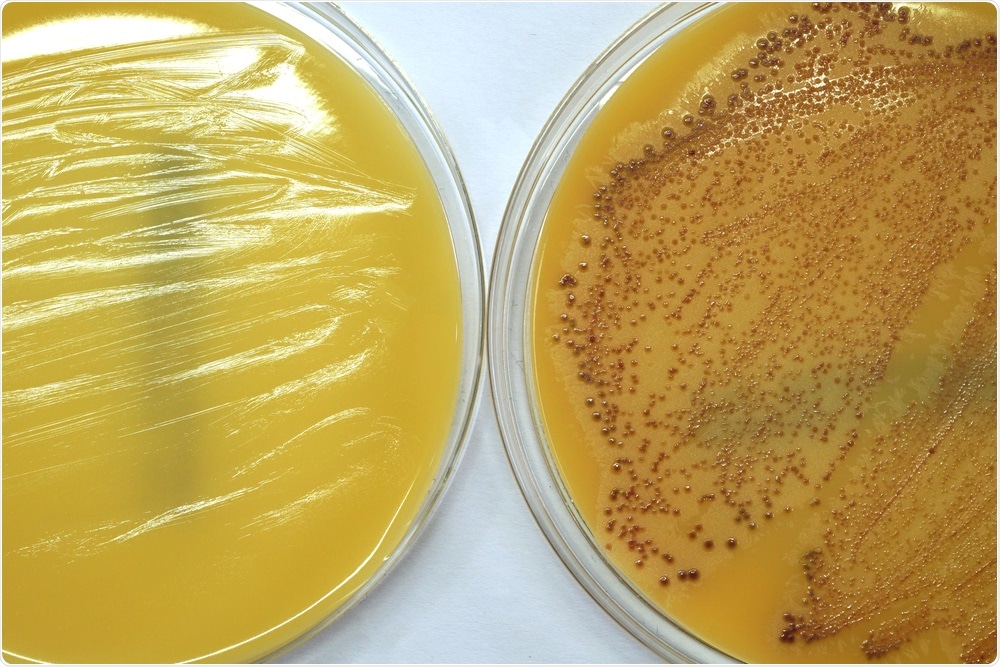Researchers at Duke University have discovered that people who carry a certain genetic mutation may have a greater chance of fighting off methicillin-resistant Staphylococcus aureus (MRSA) infections.
 Oleksandr Khokhlyuk | Shutterstock
Oleksandr Khokhlyuk | Shutterstock
The study provides further insights into the genetic factors underlying predisposition to persistent MRSA infections and could help researchers develop more effective treatments.
The increasing prevalence of antibiotic resistant staph infections has created an urgent need to better understand who is most susceptible to these difficult-to-treat S. aureus infections and why,
Vance Fowler, Professor at Duke University & Senior Author
What is MRSA?
MRSA is a bacterium that is resistant to several widely-used antibiotics, making it difficult to treat. It lives harmlessly on the skin in around one in 30 people but can cause fever, chills, and dizziness if it gets inside the body.
In severe cases, the bacterium can lead to bloodstream infections, pneumonia, and sepsis. If sepsis is left intreated, it can trigger a chain reaction in the body that results in tissue damage, organ failure, and even death.
Hospital patients and nursing home residents are at the greatest risk, since they may be exposed to MRSA through an open wound or the use of contaminated equipment such as feeding tubes, faucets or urinary catheters.
People in these environments may also have health complications that make them more susceptible to infection. The bacteria can survive on the surface of items such as towels, light switches and athletic equipment for days or even weeks.
The CDC has made reducing the spread of MRSA a priority
The U.S Centers for Disease Control and Prevention (CDC) has made reducing such antibiotic-resistant infections a priority. One potential lead is that research has previously suggested certain genetic mutations can make people more or less susceptible to infection.
“Host factors predisposing to persistent MRSA bacteremia are poorly understood, although genetic association studies are beginning to identify potentially influential variants,” write the authors of the current study.
As recently reported in the Proceedings of the National Academy of Sciences, Fowler and colleagues examined 68 patients, half of whom were suffering from persistent infection with the “superbug” and half of whom had resolving MRSA, which meant they were able to clear the bacteria from their bloodstream within five days of treatment.
The patients were matched by sex, age, race, hemodialysis status, diabetes mellitus, and the presence of an implantable medical device.
Genetic sequencing revealed a protective mutation
After performing whole-exome genetic sequencing on the patients, the team discovered that 62% of the patients with resolving MRSA had a genetic mutation, compared with only 9% of those with persistent infection.
The mutation, which is found in the DNMT3A region of chromosome 2p, appears to help the immune system clear MRSA from the blood by maintaining a healthy level of the anti-inflammatory cytokine IL-10.
This cytokine reduces the body’s immune response to S. aureus infection and researchers have learned that while a certain level of IL-10 regulates this immune response, too much is associated with organ damage and in some cases, death. Among the patients who had the mutation, serum levels of IL-10 were in check.
Next, the researchers tested the finding by blocking the mutation in a mouse model, which showed that the animals were then at an increased susceptibility to MRSA.
The team writes:
Our study identifies a particular DNMT3A mutation that contributes to an increased ability to resolve MRSA infections.
The mechanism for this appears to be increased methylation of gene regulatory regions, and reduced levels of the anti-inflammatory cytokine IL-10.
An improved understanding of the factors predisposing to persistent MRSA bacteremia may help to discover better treatment options."
Clamping down on antibiotic resistance
For decades, antibiotics have been prescribed far too readily by doctors and hospital staff. Bacteria can become resistant to antibiotics when incorrect doses are taken or when the antibiotics are given out unnecessarily and such misuse or overuse has led to the once harmless bacteria developing into highly resistant “superbugs.”
The World Health Organization has previously warned that if the overuse is not curbed, the world will be entering an era where antibiotics are no longer effective. Common infections such as chlamydia would become life-threatening, if the resistance crisis is not resolved, warned the organization.
In 2016, chief medical officer Dame Sally Davies announced that the threat of antibiotic resistance is on a par with terrorism.
Approximately 700,000 people worldwide already die each year due to drug-resistant infections such as tuberculosis, HIV and malaria and estimates suggest that by 2050, this figure will reach 10 million people per year.
There has been repeated talk of concerns that the world of medicine will be thrown back into “dark ages” if the resistance crisis eventually renders antibiotics ineffective. As well as existing antibiotics becoming less effective, scientists have only managed to develop one or two new antibiotics over the last three decades.
The WHO has warned that antibiotics are “running out,” since there is a “serious lack” of new drugs in the development pipeline.
Without antibiotics, procedures such as C-sections, hip replacements and cancer treatments would become extremely “risky,” says the WHO.
Journal reference:
Medie, M. F., et al. (2019). Genetic variation of DNA methyltransferase-3A contributes to protection against persistent MRSA bacteremia in patients. PNAS. doi.org/10.1073/pnas.1909849116.